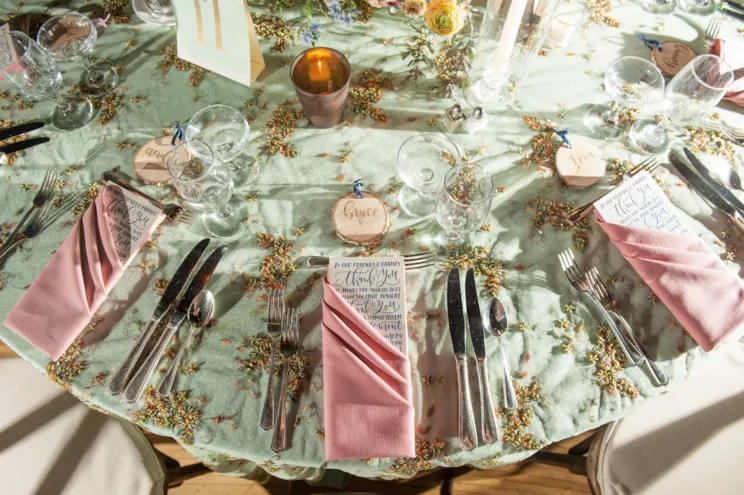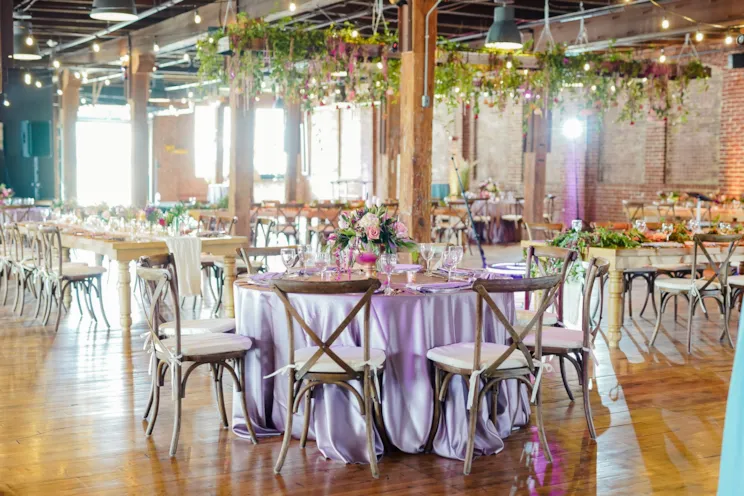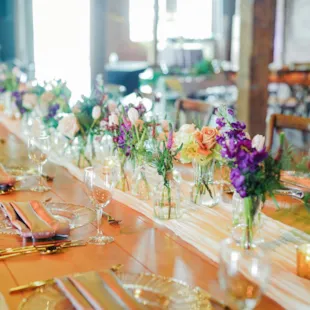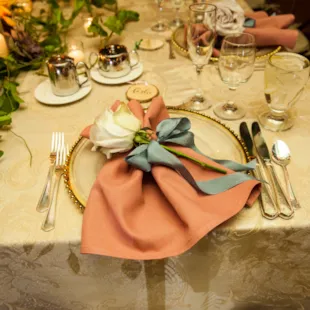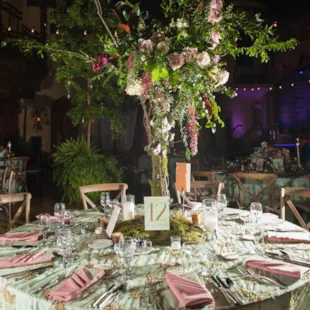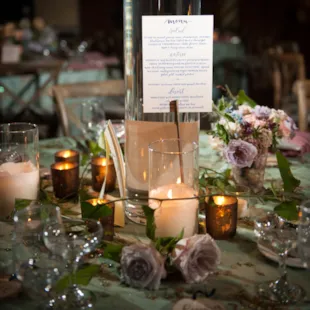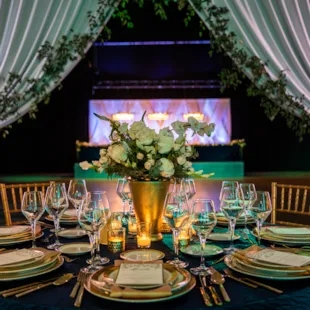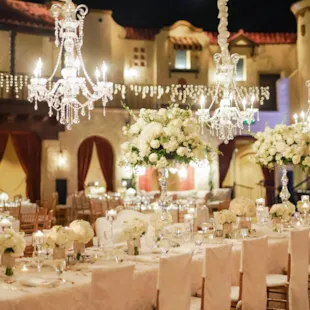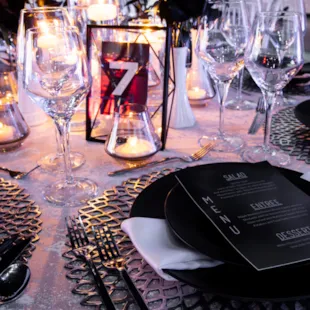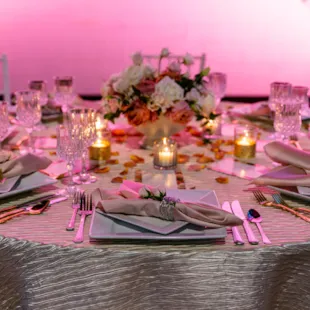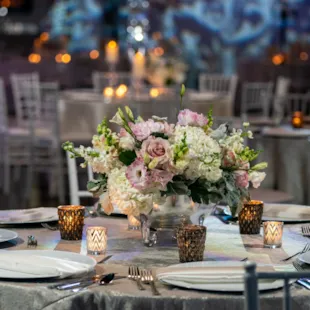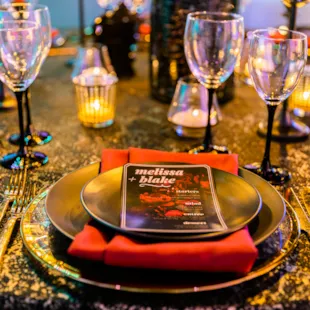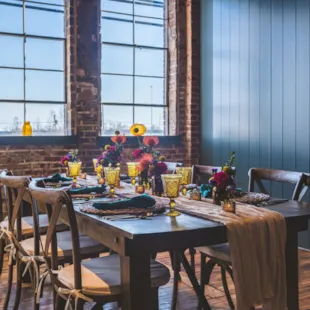
Formally setting a table is a timeless tradition that elevates a celebration, and it’s an etiquette that Crystal Signature Events prides itself on delivering for clients’ special occasions. Crystal’s servers are thoroughly trained on how to do so, and our event managers work with hosts to accurately match the table settings with their food and beverage choices.
If you’re holding your event at a Crystal Signature Events venue like The Indiana Roof Ballroom, The Crane Bay Event Center, or The Heirloom at N. K. Hurst, our expert staff will ensure every place setting is precise and every detail is accounted for when serving your guests. And if you’re hosting a formal occasion in your home or at another venue, we hope Crystal’s insights will serve as a resource to ensure a flawless event.
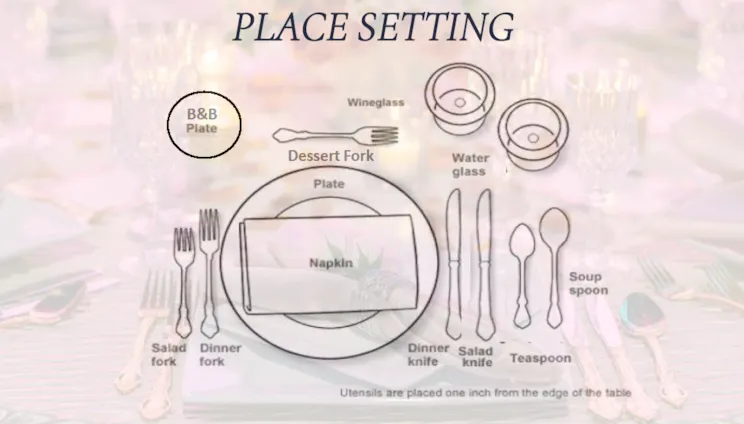
Flatware
First, consider your menu and gather only the utensils you need. Most flatware sets include 5 utensils: salad fork, dinner fork, dinner knife, soup spoon and teaspoon. For simpler meals, you may need only a fork and knife where for more formal gatherings, you may need to add additional, like a steak knife or dessert utensil.
For flatware placement on the table, the rule of thumb is go “from the outside in.” Meaning, the flatware for the first course will be the furthest out from the plate, and the next closest to the plate will be flatware for the second course, and so on. An exception to this rule is the dessert utensil, which is placed above the dinner plate.
At Crystal Signature Events we line up the flatware that is closest to either side of the plate an inch from the edge of the table, and in line with the bottom of the dinner plate. Moving outward, the next flatware is placed slightly higher to create a stair step look.
- Forks always live to the left of your plate. So if you’re having a multi-course feast, the salad course fork will be to the very left with the main course fork most to the right, alongside the plate.
- Knives live to the plate’s right side and follow the same rules with the salad knife on the outside and the dinner knife closest to the plate. Also important to note that the knife blades should be pointed towards the plate.
- Spoons live to the right of the dinner knife on the occasion when there is one needed. Again, it’s “outside in.” The soup spoon would be on the outside and a teaspoon would be between the soup spoon and salad knife.
- Dessert spoon or fork (pending item type) live at the top of the dinner plate crosswise. The base of the dessert spoon should be to your right, and the base of a dessert fork to your left, each ready to slip down into its place on the right (for the spoon) or left (for the fork) just before dessert is served.
Glassware
Like the flatware, only gather the glassware you need and set from the “outside in.”
- Water Glass should be placed about an inch above the tip of the salad knife or soup spoon (whichever is the furthest out).
- Wine Glass goes slightly up and to the left of the water glass. If you are serving both white and red wine, place the red wine glass closest to the water glass and then the white wine glass next to the red wine glass. If you are crunched for space it is also fine to use a universal wine glass instead of one for each.
- Champagne Flute placement is dependent on when the champagne will be served. If it’s a toast at the beginning of the meal, then it would go on the outside. If it’s for a toast at the end of the meal, then it should be last on the inside.
- Coffee Cup is placed to the right of the spoon (or knife, if no spoon), with the handle at 5 o’clock. Only set a coffee cup if coffee will be served table side. If there is a self-serve station then cups can be set out by the coffee instead of on the table.
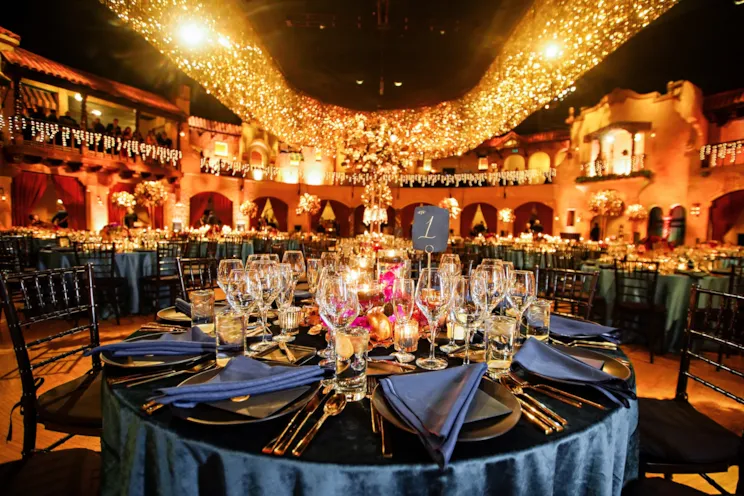
Dinnerware
For a pizza party, one plate may suffice. Otherwise, you may be looking at an appetizer plate and salad plate layered on top of a charger and/ or dinner plate. The placement of dinnerware is largely dependent on what type of food service you are providing, however there are a couple pieces of dinnerware that can be used for any type of service. Also important to try and have around 15 inches of space between place settings, so people don’t elbow each other or feel too confined.
- Charger is an optional decorative plate that is not eaten off of, but used to add formality as well as a guide to assist in setting dinnerware and flatware consistently spaced at each place setting.
- Bread and Butter plate (also known as a B&B plate) goes above the forks. Instead of butter on the table to share, consider giving each guest their own pat of butter pre-set on the B&B plate.
- Plated Meal will have the charger, followed by a pre-set appetizer or salad on top. When that course is finished the empty plate is removed and replaced with the next course and so forth. The charger is not removed until the full meal is finished.
- Self Serve Meal will have the charger followed by each plate needed per course pre-stacked on top of each other. You can also do a combo by having the first course pre-set with the empty dinner plate underneath to be self-serve.

Linens
Table runners, tablecloths and cloth napkins can be optional, but are a quick way to elevate any space and tie together any theme. Check out the Crystal Signature Events blog for ideas and inspiration.
- Napkins can go to the left of the forks, under the forks, or on the dinner plate or charger. If to the left, the fold should be nearest the plate. If on the dinner plate or charger, a napkin ring or special fold is a nice touch. YouTube is a great place to look for different napkin fold tutorials.
- Tablecloths come in every size, shape and length imaginable. Don’t be afraid to get creative by mixing and matching colors and patterns - every table does not need to look the exact same, just be cohesive.
Extra
- Salt + pepper is a shared table item. Salt is placed to the right of the pepper and it is proper etiquette for them to always be passed together
- Place cards are always lovely and often appreciated when guests gather at the table so there is no confusion or added time in figuring out where to sit. Place cards typically go above the dessert fork and spoon but can also be placed on the plate or napkin if there is not any food pre-set..
- Centerpieces, like flowers or candles, are always a delight. Be conscious of size and height so that guests are still able to see and communicate easily with each other from across the table.
Seems complicated? That’s why our team of dedicated event and culinary experts are here to guide you through your event, from menu design to place settings.
Hosting an event in your home? Simplify the setup and clean up with A Classic’s Rent the Table program. With different themes to choose from they make it easy so all you have to do is pick it up and follow the instruction card included. At the end of your event you don’t even have to fully wash anything! Simply rinse off, dry, and place it back in the box and return!
If you need help on seating arrangement ideas be sure to check out this blog as well. Happy planning!
Event and Wedding Table Setting Ideas
Related Topics: Venues, Catering, Charity and Fundraising Events, Corporate Events, Event Planning, Fundraisers, Parties and Special Events, Wedding Receptions, Heirloom at N. K. Hurst, Crane Bay Event Center, Indiana Roof Ballroom
